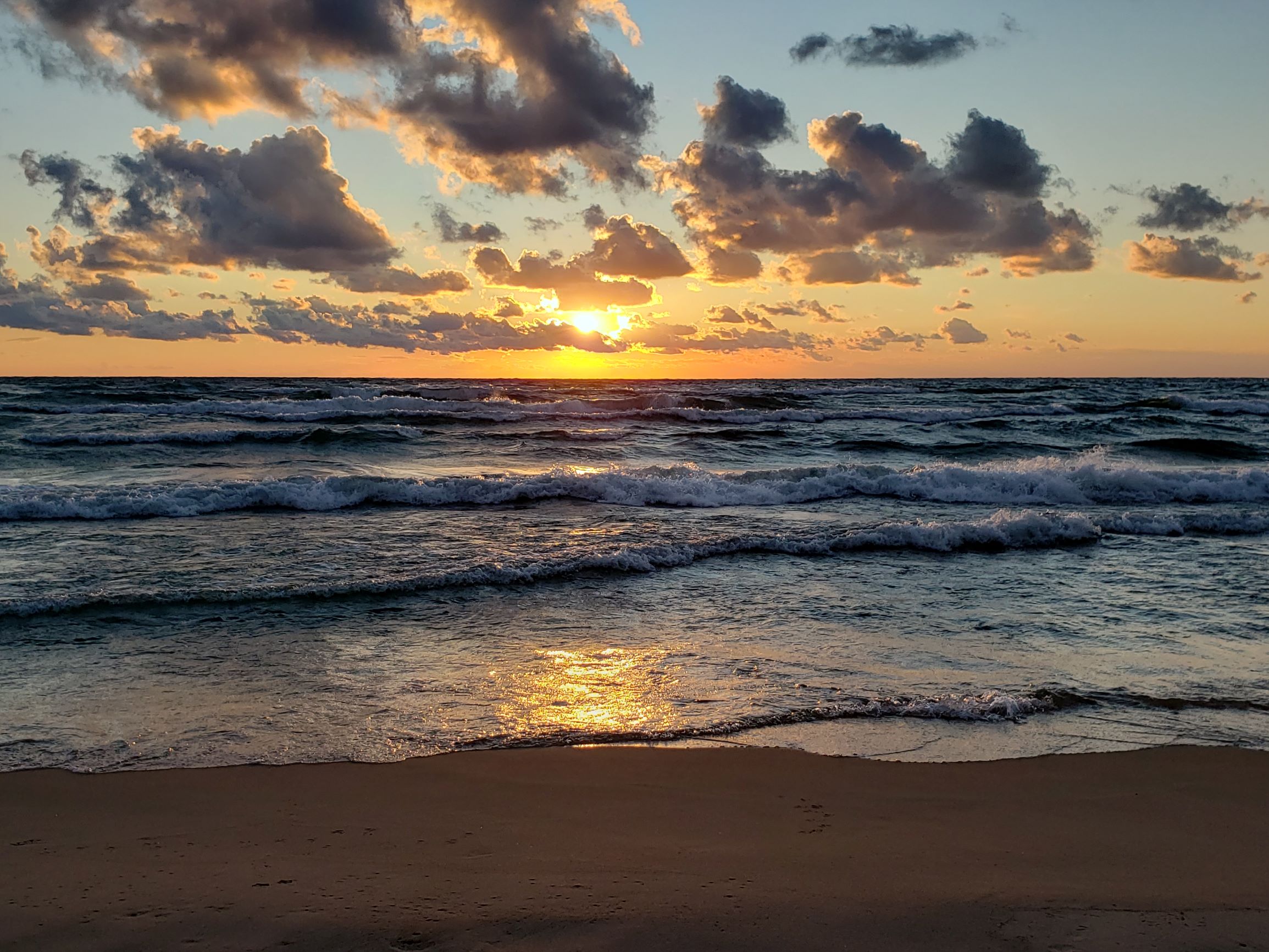Though pirates are criminals, usually quite brutal and violent, their lives are often studied, esteemed, and shown as an exciting lifestyle in many stories and Hollywood movies, from Captain Hook in Once Upon a Time to Captain Jack Sparrow. Many of the well-known pirates sailed tropical seas, but the Great Lakes has had their fair share of shady seamen as well. “Calico Jack”, whose real name was John Rackham, was known for wearing colorful clothing and was a small-time pirate from the 1700s. He would stealthily steal anything from fishing tackle to entire boats. James Jesse Strang, our friend from Beaver Island, was also considered a pirate of the Great Lakes. The most notorious of the Great Lakes pirates, and the only man known to be charged with piracy here, was “Roaring” Dan Seavey.
Daniel Ward Seavey was born on March 23, 1865, in Portland, Maine. His father was a schooner captain, so the sea was in his blood. At age thirteen, he left home to work aboard local vessels, then joined the United States Navy in 1883 at age eighteen. He grew to be an intimidating man, standing at least 6’4’’ and weighing 250 pounds. After he left the Navy, he had a brief stint as a deputy marshal for the Bureau of Indian Affairs. He tracked bootleggers and smugglers on reservations in Michigan and Wisconsin. After this job, he moved to Milwaukee where he fished, farmed and owned a local saloon.
While living in Wisconsin, he married fourteen-year-old Mary Plumley. The couple had two daughters, Harriet in 1889 and Josephine in 1890. He also developed a relationship with Frederick Pabst, a brewer who would one day found the Pabst Blue Ribbon beer company. When news of the Klondike Gold Rush arrived, Seavey, encouraged by Pabst, left Wisconsin to make his millions in Alaska. He left in 1889, but was unsuccessful and returned to the Great Lakes region penniless. He didn’t return to his family. Instead he moved to Escanaba, Michigan. Mary didn’t seem to be too broken up about being abandoned, as she changed her name to Mary Silver and though there was no official divorce from Dan, she married William Steele.
In Escanaba, Seavey married 22-year-old Zilda Bisner in 1900. Their son, Earl Daniel, was born two years later, but within four years of the wedding, Zilda filed for divorce on the grounds of severe abuse and threats on her life. Seavey again disappeared and later married Annie Bradley. This marriage lasted longer than his others, though she died young, at age 50 in 1928.
Seavey began operating various business activities around 1904, when he was able to purchase a ship, the Wanderer. It’s unclear how he gained the funds to buy the ship, but once he obtained the schooner, he used it as a legitimate shipping operation transporting goods. He also made money trapping, logging, and lumber milling, but had a nefarious side to his businesses. This included prizefighting, smuggling, poaching, bootlegging, and human trafficking. He robbed shipments of venison and alcohol, then sold it at a high price, and wouldn’t hesitate to use a cannon to force his agenda when needed.
A clever way Seavey would rob others was to put up fake lights to simulate a port. This was a practice known as moon cussing. Incoming ships would crash on the rocks and become easy pickings for men lying in wait. He was also known for venison poaching. One report details that a company called Booth Fisheries attempted to compete with his illegal trade, and tried to stop it. Seavey attacked one of their ships using cannon and killing everyone on board.
Another scheme included smuggling a certain type of hay into Chicago, where horseracing was very popular. Apparently, this type of hay could only be found in Michigan’s Upper Peninsula, and would make the horses run faster.
A turning point in Seavey’s life started on June 17, 1908. He was in Grand Haven, and met the captain of a ship full of lumber, RJ McCormick. Seavey invited McCormick and his crew to drink with him. When the crew of the Nellie Johnson were all unconscious from being drunk, Seavy and two of his men went to the ship, which was docked in nearby Montague, and commandeered it. They sailed it to Chicago, intending to sell the cargo, but for some reason, they were unable to do so. The US Revenue Cutter Service, an organization that focused on maritime law enforcement, gave chase, and Seavey headed north. The Service caught up with Seavey on June 29, and they took him back to Chicago in irons, arrested for piracy.
Seavey was officially charged with unauthorized removal of a vessel on which he had once been a seaman, which was otherwise known as mutiny and sedition. He was released on bond and the charges were dropped, though there are no reports as to why. Some believe he had a lawyer who used corrupt means to get him acquitted, while others believe it was because Captain McCormick never showed up to the trial, or that he decided not to press charges for some reason. Seavey argued that he had won the ship from McCormick in a bet, and maintained that fact for the rest of his life.
After Seavey was released, he turned into a model citizen–but did he really? He accepted a position with the United States Marshal Service, where, oddly enough, he worked to curb poaching, smuggling and piracy on Lake Michigan. In 1918, the Wanderer was destroyed by a fire and Seavey replaced it with a 40-foot motor launch. This type of seacraft was the favored ship of Great Lakes alcohol smugglers during Prohibition. There is no record of whether Sealey remained a marshall, went back to outlaw activities, or both.
Seavey was burned badly in an accident in 1927, and many believed this was the reason he retired from piracy. He settled in Peshtigo, Wisconsin to live with his daughter, Josephine and her husband, Ernest Beauchamp. There are rumors and speculation that Seavey and his first wife, Mary Silver, may have rekindled their relationship in the mid-1920s.
Dan Seavey lived a quiet life for the rest of his days, and died at the ripe old age of 84 in the Eklund nursing home on February 14, 1949. It’s quite interesting to know that our Great Lakes were actually home to not only booming legitimate businesses but also activities that were not so honest. There are probably countless other pirates that we will never know about.
If you have an interest in learning more about piracy in our great state you can start by visiting the Great Lakes Shipwreck Museum and Whitefish Point Light Station or by hopping aboard an Alpena Shipwreck Tour. Happy pirating!







Leave A Comment
You must be logged in to post a comment.